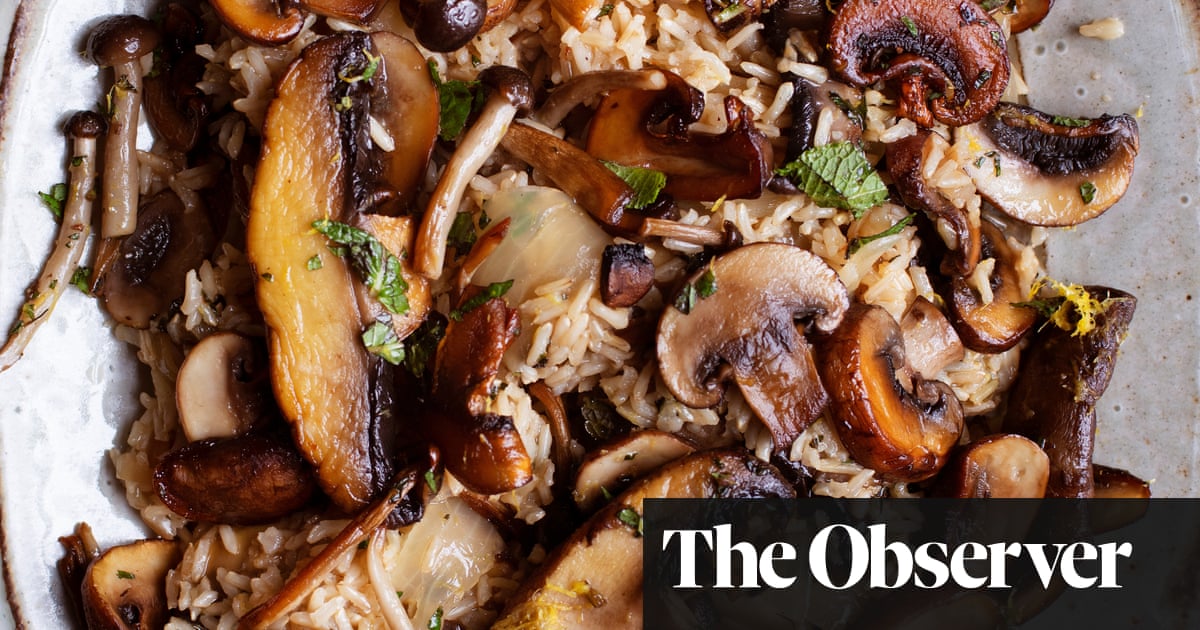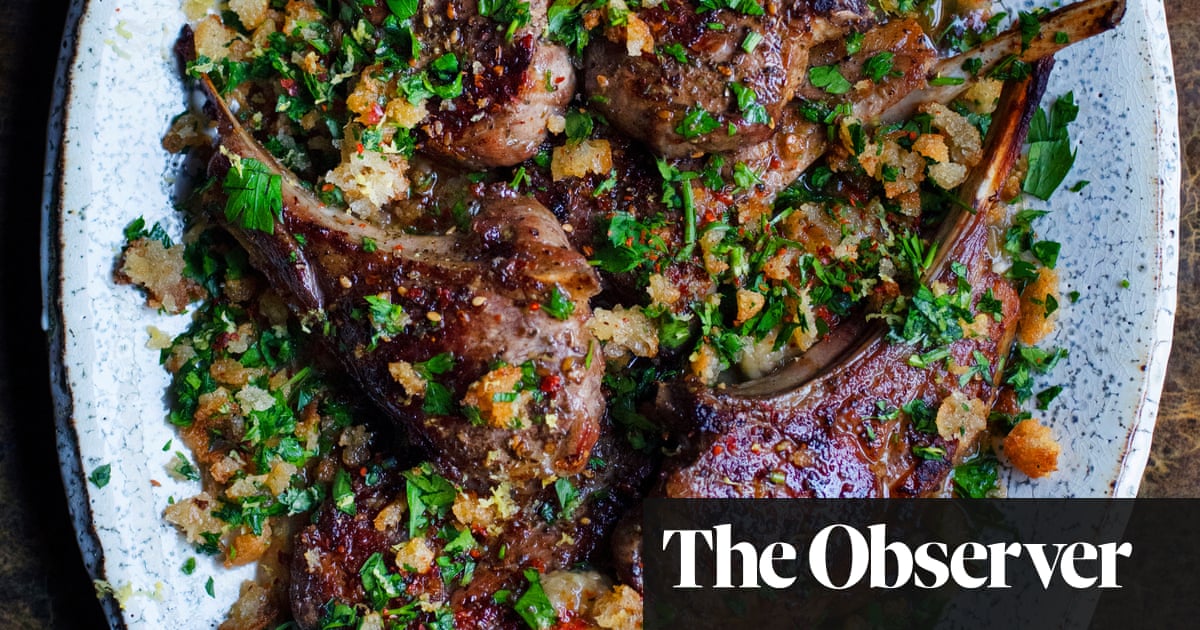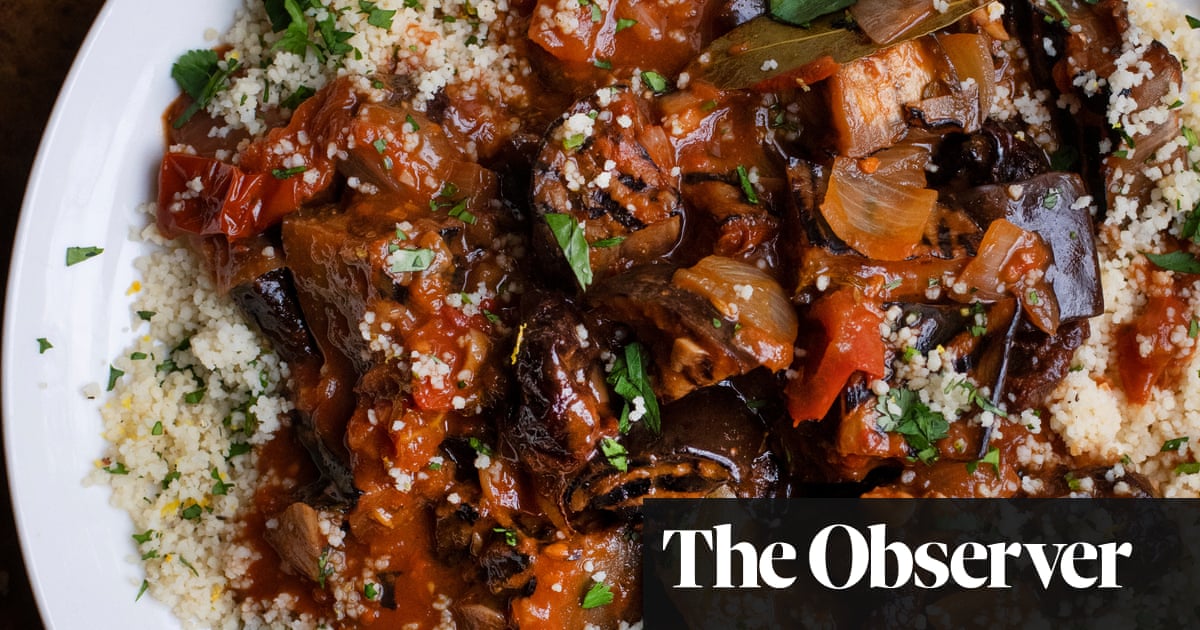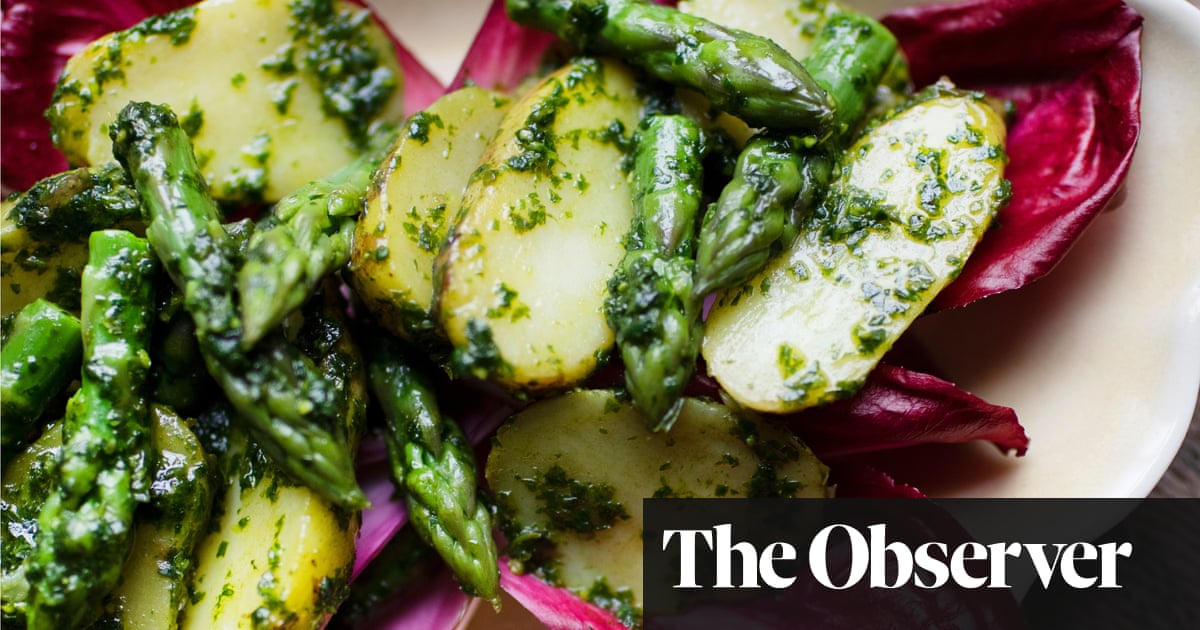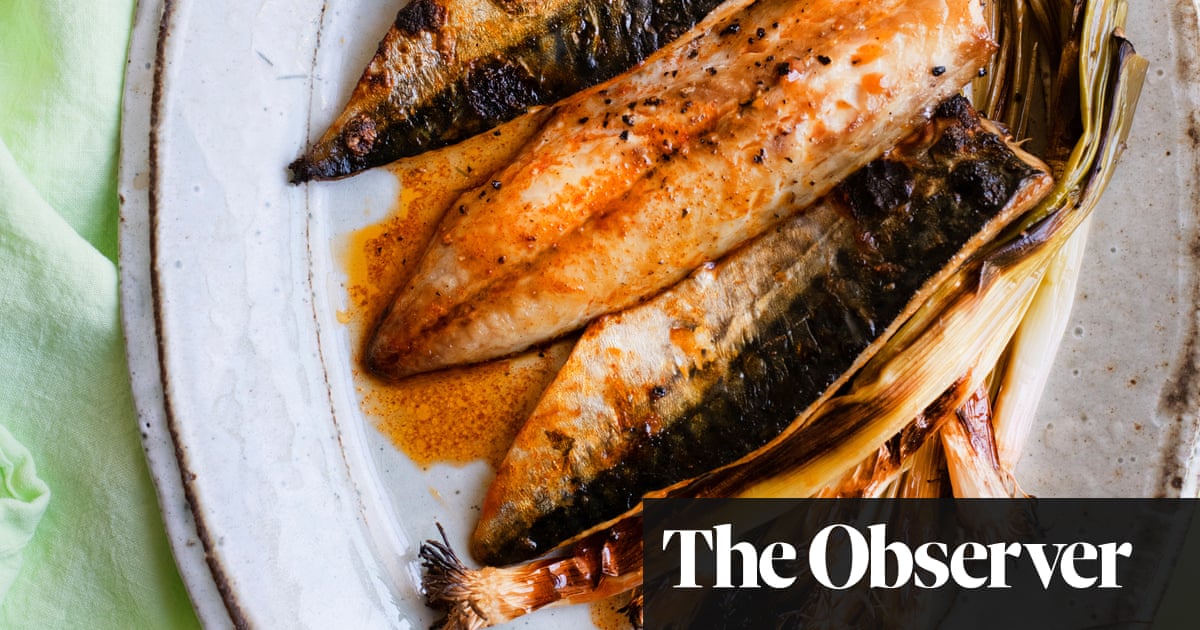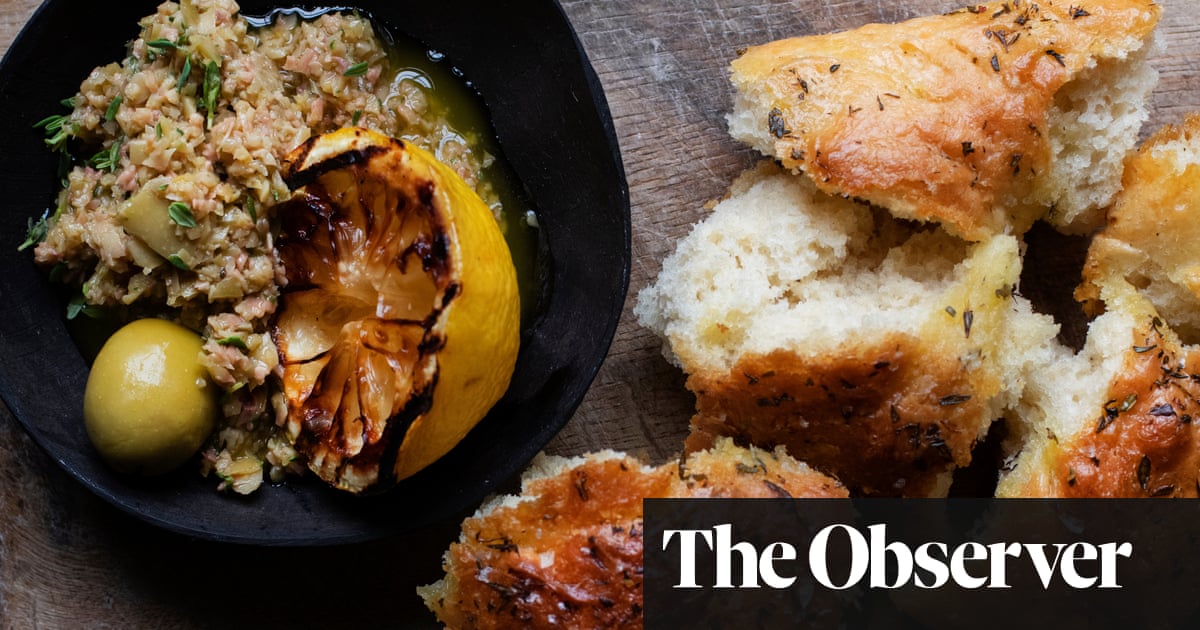
We pounced on the focaccia, tearing it into jagged pieces and scooping up the olive dip from our plates with the thick, salt-encrusted bread. Plates were mopped with the still-warm dough and our fingers – oily and tasting of thyme – were licked clean. If I had baked two loaves, I reckon we could easily have got through them both. Spring has brought with it an appetite.
I had let the dough rise in the fridge overnight, the soft, yeasty cloud tucked in a bowl under a freshly laundered tea towel where it rose slowly. I wanted a bread whose texture was neither tight like cake nor so full of holes that it is useless for scooping up a dip.
The slow rise seems to give a better textured bread, one whose progress I don’t have to constantly check as you do a dough that is risen in a warm place. The overnight rise is gentler and more controlled, the magic working quietly as we sleep. There is something rather wonderful about being greeted by a freshly risen dough in the morning, ready to be baked.
No mere accompaniment, this loaf was lunch itself, with a lemony olive dip that shone with green oil and a fresh pea salad to follow. The peas were cooked for only a minute or two then tossed over a snow-white mound of ricotta and thick kefir, to be scooped up with a tangle of pea shoots and crisp new radishes, fat as golf balls.
Herb focaccia with green olive, burnt lemon and thyme dip
If you happen to have a jar of sourdough starter in the fridge, add a couple of tablespoons when you add the yeast. Grilling the lemon gives the juice a more mellow, lightly toasted flavour. Serves 2-4
For the focaccia:
warm water 400ml
easy-baked dried yeast 2 tsp
sea salt 1 tsp
caster sugar 1 tsp
strong white bread flour 500g
olive oil 6 tbsp
thyme leaves 1 tbsp
sea salt flakes
You will also need a high-sided baking tin, approximately 24 x 24cm.
Put the water and yeast into a large mixing bowl and add the salt and sugar. If you are adding sourdough starter, do so now. Mix in the flour by hand or with a spatula. Add 2 tbsp of the olive oil and mix into the dough. Cover the bowl with a tea towel and refrigerate overnight (I like to give the dough a good eight hours).
Next day, when the dough has risen to about twice its original size, chop the thyme leaves and add them into the dough along with another 2 tbsp of the oil. Lightly oil the baking tin and turn the dough out into it. Push the dough to fit the tin with your fist, gently pushing it almost into the corners.
Wrap the tin in a cloth and place in a warm spot for about an hour until it has risen to twice its size. Set the oven to 220C/gas mark 8. When the oven is ready, push 12 or so hollows into the dough with your finger, scatter the surface with sea salt and bake for 30 minutes until golden. Remove from the oven and pour the remaining oil over.
For the dip:
lemon 1, large
green olives 250g, stoned
thyme leaves 1 tbsp
olive oil 6 tbsp
Get a small griddle pan hot. Cut the lemon in half and place cut side down on the griddle. Leave until the underside is toasted, even a little blackened, then remove and squeeze the juice.
Put the olives in a food processor with the thyme leaves, and process until finely chopped. Pour in the olive oil then, finally, 4 tbsp of lemon juice. Check the seasoning – you may need a little black pepper. Serve with the warm focaccia.
Pea salad with ricotta and lemon
A soft, sharp and creamy salad with the crunch of peas and crisp, raw radishes. Serves 3 as a light salad
For the ricotta:
young garlic 2 cloves
ricotta 250g
natural yoghurt 4 tbsp
lemon zest 1 tsp, finely grated
For the salad:
peas 200g, podded weight
peas in their pod (or mangetout) 2 handfuls (about 150g)
olive oil 2 tbsp
pea shoots 2 large handfuls
pine kernels 2 tbsp
radishes 6, halved
For the mint oil:
mint leaves 12-15
olive oil 75ml
Peel the garlic and crush to a paste with a tiny pinch of salt. I use a small pestle and mortar for this, but the flat blade of a knife or the back of a spoon will do, too.
Mix together the ricotta and yoghurt to give a loose paste, then stir in the garlic and the finely grated lemon zest. Add a little coarsely ground black pepper.
Have a bowl of iced water to hand. Bring a deep pan of water to the boil, salt it lightly, add both lots of peas and cook for 3 or 4 minutes, then drain and plunge into iced water. This stops them cooking and keeps their colour bright.
Drain and shake them dry (you could use a salad spinner). Toss the peas in the olive oil.
In a dry pan, toast the pine kernels until pale gold in colour. Keep them moving round the pan so they colour evenly, and keep an eye on them, as they are easy to burn.
Blitz the mint leaves and olive oil in a food processor or blender, adjusting to a pouring consistency with a little water. Season lightly with salt.
Put the ricotta dip on a serving dish, add the peas, pea shoots and radishes. Scatter with the toasted pine kernels and trickle the mint oil over.






